In recent years, lab-created diamonds have taken the jewellery industry by storm, captivating the hearts of couples seeking both ethical and environmentally responsible choices for their engagement and wedding jewellery. As we delve into the captivating world of lab-created diamond engagement rings, not only we explore the intricate science behind their creation but also the burgeoning trends that have made lab-grown diamond engagement rings and wedding bands increasingly popular among discerning individuals and couples. These trends reflect a growing awareness of the unique qualities and advantages that lab grown diamond engagement rings bring to the world of fine jewellery. So, let’s embark on this journey, uncovering both the science of sparkle and the pulse of contemporary jewellery preferences.
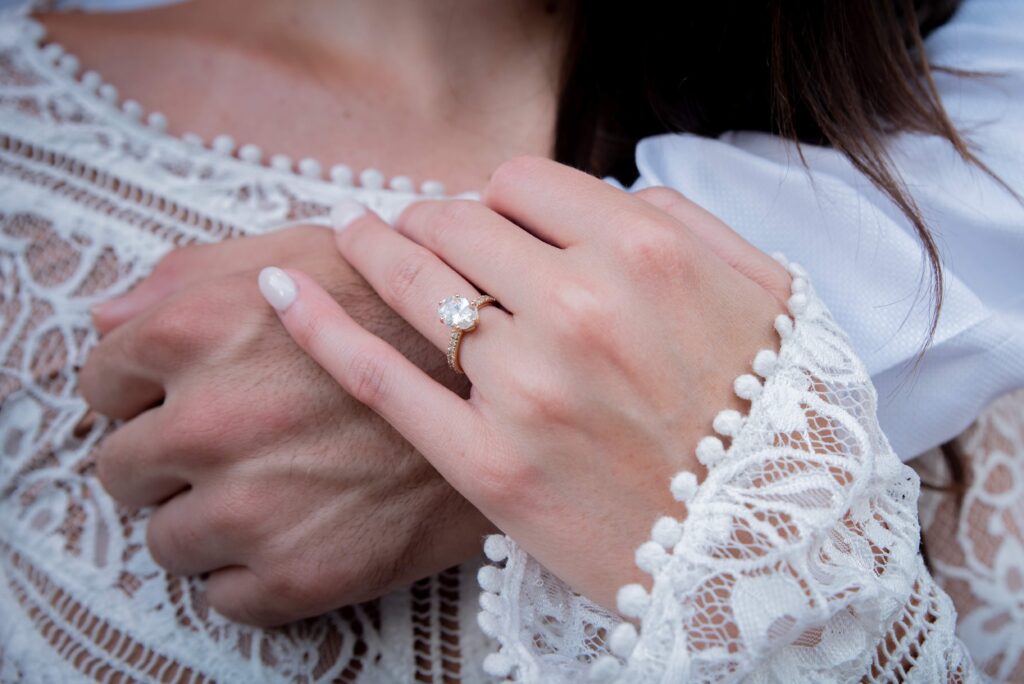
What are Lab Created Diamonds?
Lab-created diamonds, also known as synthetic or man-made diamonds, are produced in controlled environments that replicate the natural conditions under which diamonds form in the Earth’s mantle. These gems share the same physical, chemical, and optical properties as natural diamonds, making them indistinguishable to the naked eye.
The biggest chaos we all face when buying diamonds is whether they are natural or lab-grown. Lab-grown diamond rings are cheap, flawless, and shine in the same way as the pure, natural ones but we don’t prefer them. They don’t have the time stamp on them and almost anyone can buy them. Usually, that is what makes them lose their shine in the eyes of men.
What is it that makes us prefer a natural diamond in place of a lab-grown diamond ring?
What we have found is that it is mostly our thought process wherein we always want to have nature’s blessings by our side whenever we are attempting a new thing in our lives. A natural one is supposed to have nature in it when compared to an artificial one grown in close compact labs.
How Is a Lab Grown Diamond Different From a Natural One?
Tiny carbon seeds are all you need to create a sparkling, dazzling big diamond in the lab. Where do you find these seeds? Usually, pre-existing diamonds form the seed for the diamonds created in labs. Lab-grown diamonds became visible only when the right machines came together. General Electric came together to create the first batch of lab created diamonds and it was only available to people in 1954. But only since 1970 have companies begun creating gem-quality diamonds in the lab.
With fast-depleting diamond mines, these lab-created diamonds are all that would be left for future generations. Only when someone is willing to sell their diamonds in the market can there be a natural diamond visible in the nearest and distant future.
With people accepting the new variety of diamonds, between 2021 and 2026 the lab-created diamonds would have shown a universal acceptance and growth rate of 22%. It is surely a step ahead into the future and those who know it are already treating the lab-created diamonds as an asset. Even though right now they don’t have any resale value in the market they might surely have a resale value in the future with all the real diamonds gone.
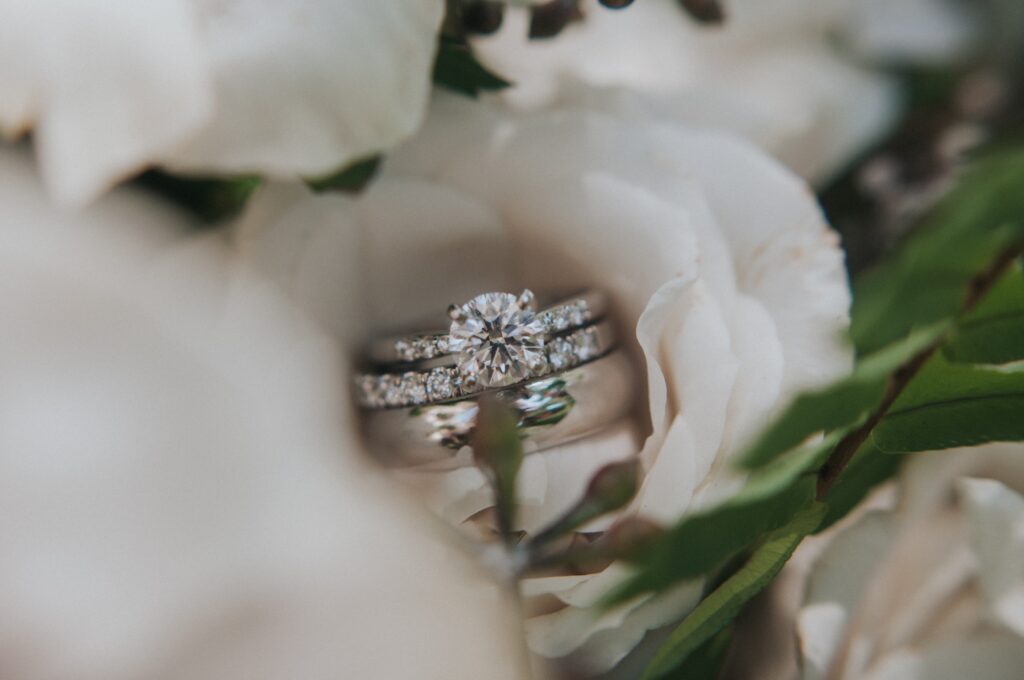
The Process of Making Lab Created Diamond Rings
Creating lab-grown diamond rings involves advanced technology and a carefully controlled process. Here are the key steps:
Seed Crystal Formation: In the initial stage of crafting lab created diamond rings, the foundation is laid with the creation of tiny diamond seed crystals. These minuscule seed crystals serve as the nucleus upon which the entire diamond growth process hinges. They are meticulously generated and then delicately placed within a specialized chamber designed for this purpose. Depending on the chosen method, this chamber can either employ high-pressure, high-temperature (HPHT) conditions or rely on chemical vapor deposition (CVD) techniques.
Carbon Growth: With the seed crystals in place, the transformative process begins. Carbon atoms are introduced into the chamber, and here, the magic unfolds. These carbon atoms serve as the elemental building blocks of the diamonds-to-be. Within the controlled environment of the chamber, these carbon atoms gradually bond with the seed crystals. Over the course of several weeks to months, these atoms accumulate, arranging themselves into the intricate lattice structure that defines the diamonds. It’s during this phase that these gems gradually evolve into the exquisite jewels destined for your lab-grown diamond ring.
Diamond Cutting and Polishing: The journey from the rough, uncut diamonds to the dazzling gems adorning your ring is a true testament to artisanal skill and precision. Once the diamonds have reached their full potential, they emerge as rough, uncut gems. This is where the skilled hands of craftsmen come into play. With meticulous precision, they embark on the delicate process of cutting and polishing these diamonds. Each facet is carefully shaped and polished to unlock the diamonds’ innate brilliance and fire, revealing their mesmerizing beauty. This intricate craftsmanship ensures that the lab grown diamonds achieve their maximum sparkle and visual appeal.
Setting in Rings: With the diamonds now radiating their captivating allure, the final phase awaits. These lab-grown diamonds are expertly set into various ring settings, mirroring the process used for natural diamonds. This is a skilled and artful process, ensuring that the gems are securely nestled within their chosen settings. It’s at this stage that these exquisite lab grown diamonds are poised to grace the fingers of their future owners, capturing hearts with their timeless beauty.
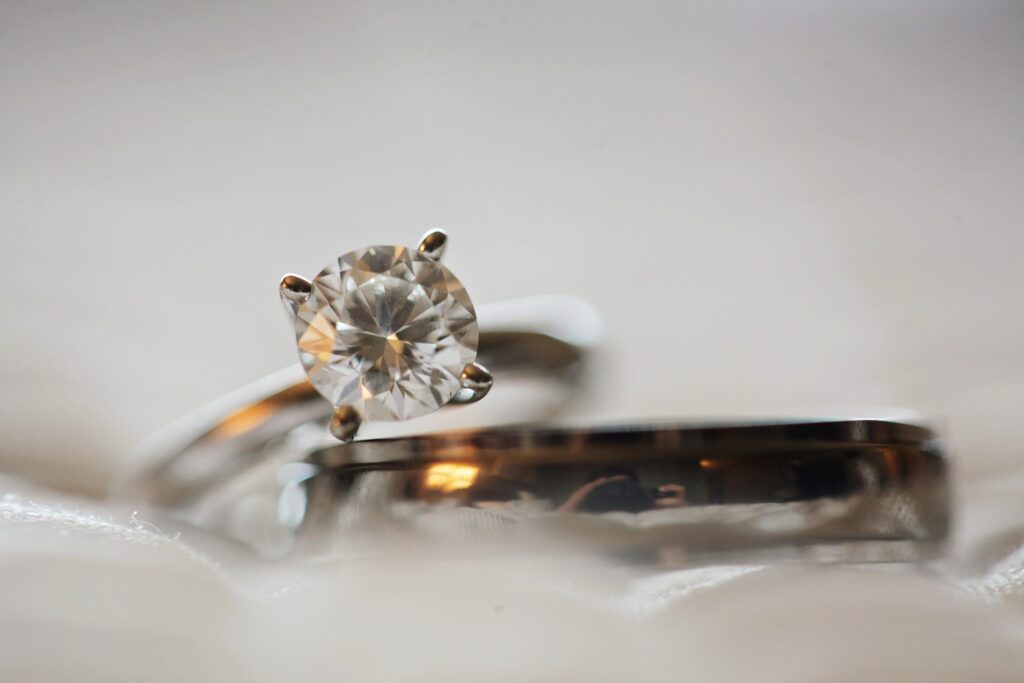
Advantages of Lab Grown Diamond Rings
Ethical Sourcing: One of the most notable advantages of lab grown diamonds is their ethical sourcing. These gems are inherently conflict-free, erasing any concerns about inadvertently supporting unethical mining practices. When you choose a lab grown diamond, you can wear it with the assurance that it was created responsibly.
Environmental Impact: The production of lab grown diamonds typically leaves a smaller environmental footprint compared to traditional diamond mining. This environmentally conscious aspect appeals to those who prioritize sustainability and eco-friendliness in their jewelry choices.
Affordability: Lab created diamonds often come at a more accessible price point than their natural counterparts. This affordability widens the appeal of diamond jewelry, making it attainable for a broader range of individuals without compromising on quality or beauty.
Quality Control: Lab grown diamonds are cultivated in a tightly controlled environment, ensuring consistent quality and fewer impurities. The result is a collection of gems that exhibit exceptional clarity and brilliance, making them a choice that aligns with high standards of quality.
Differences between Lab Created Diamond Rings and Natural Diamond Rings
Origin: The most prominent difference lies in their origin. Lab grown diamond engagement rings are meticulously created in controlled settings, whereas natural diamonds are formed deep within the Earth’s crust through geological processes spanning millions of years.
Cost: Natural diamonds tend to command higher price tags due to their rarity and the challenges associated with mining them. In contrast, lab grown diamonds offer a more budget-friendly option without compromising on beauty.
Inclusions: Natural diamonds often bear unique inclusions—tiny imperfections that are a testament to their natural formation. These inclusions, sometimes seen as nature’s fingerprint, add character to each natural diamond. In contrast, lab grown diamonds are typically inclusion-free, showcasing their flawless beauty and uniformity.
Environmental Impact: The process of mining natural diamonds can have significant environmental consequences, including habitat disruption, water usage, and carbon emissions. By choosing lab grown diamonds, individuals make a conscious choice to mitigate these environmental impacts and contribute to a more sustainable future.
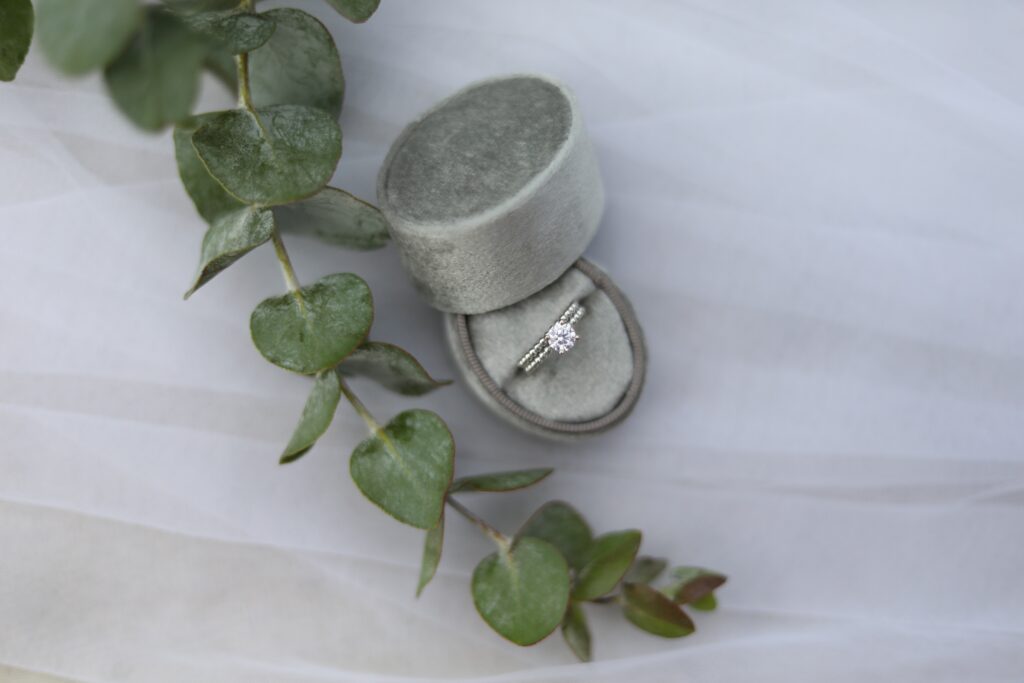
How to Determine the Quality of a Lab Created Diamond Ring
When assessing the quality of a lab-created diamond ring, it’s crucial to consider the same “Four Cs” as you would when evaluating natural diamonds: Carat weight, Cut, Color, and Clarity. These factors collectively contribute to the overall beauty, value, and unique character of your chosen gem. To make an informed and satisfying decision, you can rely on gemological certificates, which provide invaluable insights into these critical aspects:
- Carat Weight: Carat weight refers to the size of the diamond and is one of the most visible factors impacting its perceived value and presence. Larger carat weights are generally associated with higher prices. However, it’s essential to balance your preference for size with your budget, as carat weight significantly influences the overall cost of the ring.
- Cut: The cut of a diamond is a complex interplay of angles and facets that determine how effectively it reflects light. A well-cut diamond maximizes its brilliance, fire, and sparkle. Seek out diamonds with excellent or ideal cut grades to ensure they exhibit the mesmerizing play of light that makes diamonds truly captivating.
- Colour: Diamond color is graded on a scale from D (colourless) to Z (light yellow or brown). The closer a diamond is to colourless, the more valuable it is considered. However, the choice of colour grade should align with your personal aesthetic preferences. Some may prefer the icy brilliance of a colourless diamond, while others may appreciate the warmth of a diamond with a subtle hue.
- Clarity: Clarity evaluates the presence of internal and external flaws or inclusions within the diamond. A higher clarity grade signifies fewer imperfections. While many lab grown diamonds are relatively free of inclusions due to their controlled growth, it remains essential to verify their clarity grade through gemological certificates.
Gemological certificates provide comprehensive and objective information about these crucial factors, offering transparency and assurance regarding the quality of your lab-created diamond ring.
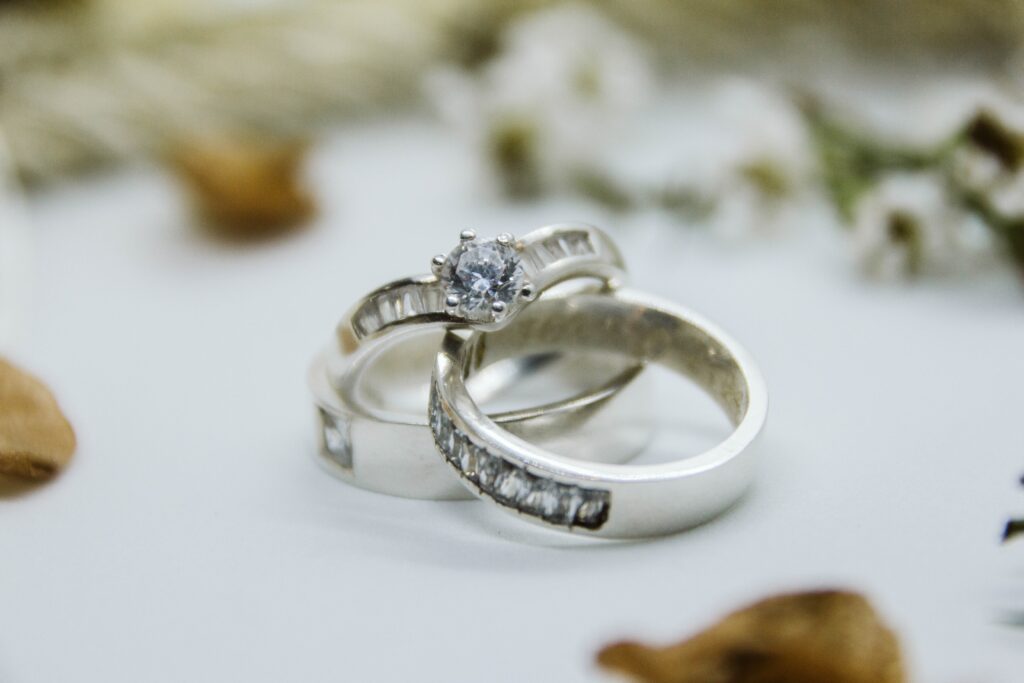
Popular Styles of Lab-Created Diamond Rings
Lab-created diamond rings offer an extensive and captivating array of styles, ensuring there’s a perfect match for every taste, personality, and occasion. Here’s an expanded overview of some popular styles to inspire your choice:
- Classic Solitaires: Classic solitaire settings are timeless and elegant, featuring a single lab-grown diamond prominently at the center of the ring. This style celebrates the pure and unadulterated beauty of the diamond, making it a symbol of everlasting love and commitment.
- Vintage Designs: For those who appreciate the charm of bygone eras, vintage-inspired lab-created diamond rings transport you to a world of intricate detailing, romanticism, and a touch of nostalgia. These rings capture the essence of a bygone era, adding a unique and sentimental touch to your engagement or celebration.
- Halo Rings: Halo settings are designed to enhance the brilliance of the central lab-grown diamond. They feature a cluster or “halo” of smaller diamonds surrounding the main stone, creating a captivating and radiant effect. Halo rings are known for their added sparkle and visual impact, making them a popular choice among those who desire maximum brilliance.
- Three-Stone Rings: Three-stone lab-created diamond rings symbolize the past, present, and future of your relationship. Each diamond in this design carries its unique significance, making it a meaningful choice for engagements, anniversaries, and special milestones.
- Custom Creations: Many jewelers offer the opportunity to design a custom lab-created diamond ring, enabling you to craft a one-of-a-kind piece that reflects your individuality and love story. Customization allows you to select the perfect diamond, setting, and design elements to create a truly unique and personalized symbol of your commitment.
The versatility of lab grown diamonds ensures that you can discover a ring style that resonates with your unique preferences and celebrates your love story in a way that feels deeply personal and meaningful.
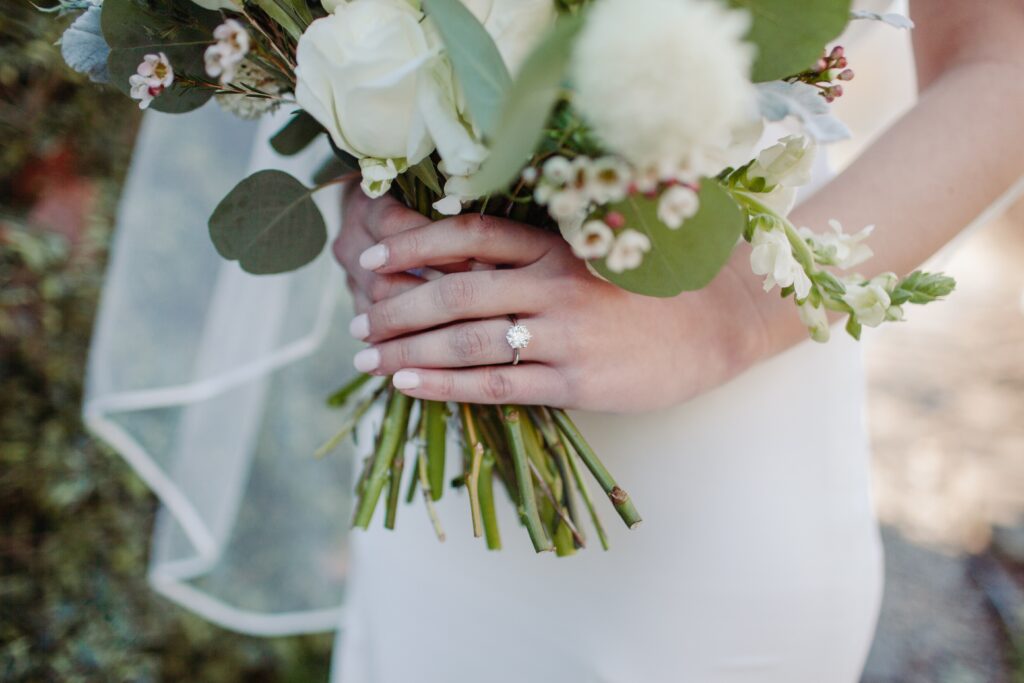
Caring for Lab-Grown Diamond Rings
Caring for lab grown diamond engagement rings is an essential aspect of preserving its beauty and brilliance over time. Similar to natural diamond rings, lab grown diamonds benefit from regular cleaning and maintenance. Here are some elaborated care tips:
Regular Cleaning: To maintain the radiant sparkle of your lab-created diamond ring, it’s advisable to clean it regularly. Begin by preparing a gentle solution of warm water and mild dish soap. Use a soft brush to delicately scrub the ring, removing accumulated dirt and oils. Rinse it thoroughly under running water and pat it dry with a clean, lint-free cloth. This cleaning routine helps keep your diamond looking its best.
Avoid Harsh Chemicals: It’s essential to shield your lab-created diamond ring from exposure to harsh chemicals and cleaning agents. Chemicals like bleach and chlorine can potentially damage both the metal setting and the diamond itself. Remove your ring before engaging in activities where it may come into contact with such substances.
Professional Inspection: Schedule periodic professional inspections and cleanings with a reputable jeweler. Professional jewelers possess the expertise and tools to assess the integrity of the setting and diamond, ensuring that everything is secure and in optimal condition. These inspections also serve to identify and address any potential issues before they become significant concerns.
In conclusion, lab grown diamond engagement rings stand as a remarkable fusion of scientific innovation and artistic craftsmanship. They present an ethical, environmentally conscious, and cost-effective alternative to natural diamonds, all while upholding impeccable quality and captivating sparkle. Nowadays, many men’s and women’s engagement rings and wedding bands are made up of lab-grown diamonds, which is a great initiative to look classy, save money, and be responsible for the earth. As you embark on the journey of selecting a stunning and socially responsible piece of jewellery, remember to consider the Four Cs, explore various ring styles, and prioritise regular maintenance to ensure lab grown diamond engagement rings continues to shine brilliantly and symbolise your enduring love for years to come.
IF YOU FOUND THIS USEFUL THEN WHY NOT PIN IT
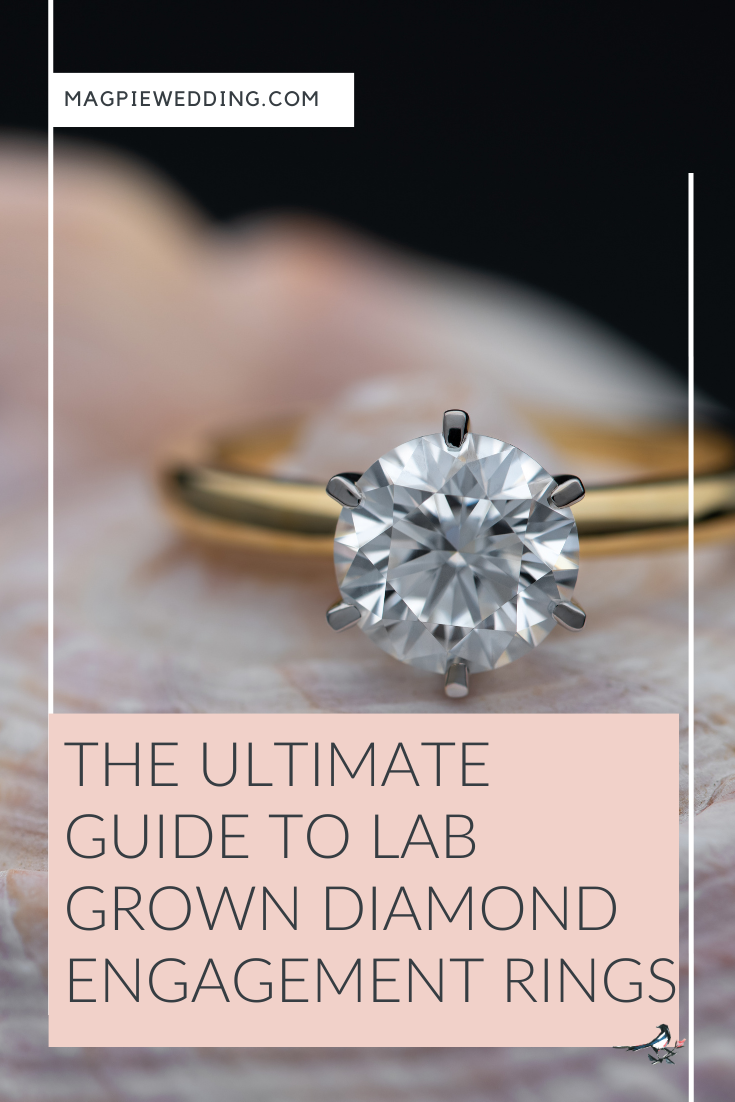
This is a collaborative post




